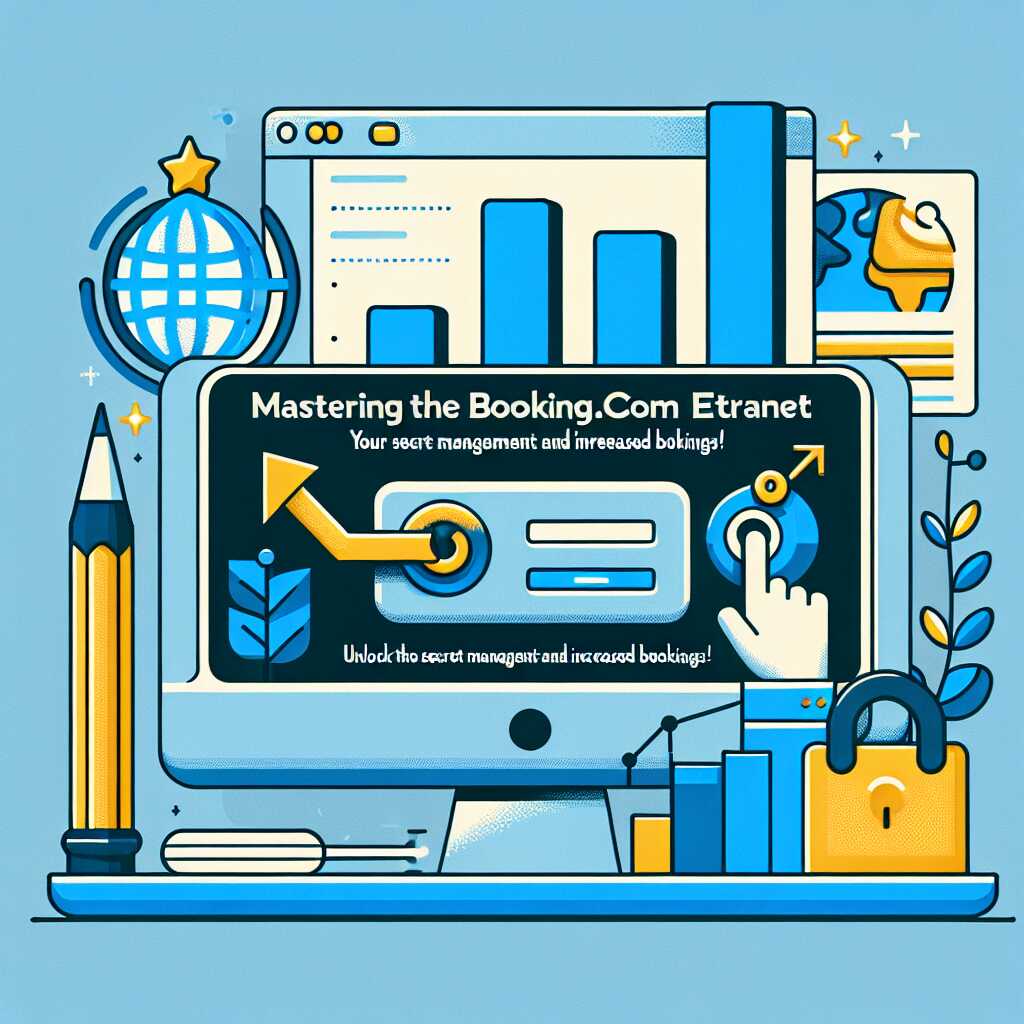
Mastering the Booking.com Extranet: Your Ultimate Guide
Written by welcomebooks.shop on 10/22/2024
- guide
- tips
- airbnb
- hosting
- examples
The first time I logged into the Booking.com Extranet, I felt like I had just stepped into a labyrinth. There were so many buttons, options, and settings that I didn’t know where to start. I remember staring at the screen, feeling overwhelmed and a bit lost. But over time, I learned to navigate this powerful tool, and I want to share my journey with you.
Understanding the Extranet
The Booking.com Extranet is essentially your command center as a host. It’s where you manage your property listings, bookings, and guest communications. At first, it can seem intimidating, but once you get the hang of it, you’ll find it’s a fantastic resource for maximizing your property’s potential.
When I first started hosting, I didn’t realize how crucial it was to keep my listings updated. I learned the hard way that outdated information can lead to confusion and unhappy guests. So, my first piece of advice is to regularly check your listings. Make sure your photos are current, your descriptions are accurate, and your pricing reflects any seasonal changes.
Personal Tip: I set a reminder on my phone to review my listings every month. This simple habit has helped me stay on top of things and avoid any last-minute surprises.
Setting Up Your Property
Once you’ve logged in, the first thing you’ll want to do is set up your property. This includes entering details like the number of rooms, amenities, and house rules. I remember spending hours perfecting my property description. I wanted to make it inviting and informative, but I also had to ensure it was accurate.
One thing that helped me was to think like a guest. What would I want to know before booking? I included details about nearby attractions, public transport options, and even my favorite local restaurants. This not only made my listing more appealing but also helped set the right expectations for my guests.
Managing Bookings
Managing bookings is another critical aspect of using the Extranet. You’ll receive notifications for new bookings, cancellations, and guest inquiries. I found it helpful to respond to messages promptly. Guests appreciate quick communication, and it can lead to better reviews.
In the beginning, I struggled with juggling multiple bookings. I learned to use the calendar feature effectively. It allows you to see your availability at a glance, which is essential for avoiding double bookings. I also recommend blocking off dates when you need to do maintenance or if you’re planning a vacation yourself.
Personal Anecdote: I once had a guest who wanted to check in a day earlier than their original booking. I was able to accommodate them because I had blocked off a few days for maintenance. They were thrilled, and I received a glowing review for my flexibility!
Optimizing Your Listings
To stand out on Booking.com, you need to optimize your listings. This means using high-quality photos, writing compelling descriptions, and setting competitive prices. I learned that the first impression matters a lot. Guests often scroll through listings quickly, so having eye-catching images is crucial.
I invested in a professional photographer for my property, and it made a world of difference. The photos showcased my space beautifully, and I noticed an increase in inquiries almost immediately. Additionally, I experimented with different pricing strategies. I found that offering discounts for longer stays helped attract more bookings during slower seasons.
Enhancing Guest Experience
The Extranet also allows you to manage guest communications. I always made it a point to send a welcome message before their arrival. It included check-in instructions, Wi-Fi passwords, and my favorite local spots. This small gesture made my guests feel valued and informed.
Personal Tip: I created a digital welcome book that I sent to my guests before their arrival. It included everything they needed to know about the property and the area. It saved me time answering questions and made their stay more enjoyable.
Hi, I am Marius
I hosted many people on Airbnb and I know the struggle of creating nice welcome books. So I built a tool that saves you tons of work by transforming your existing Airbnb listing into a professional welcome book featuring all the most important sections.
Your benefits
- It is free and saves you tons of time
- It gives you a structure to include all imporant sections
- It generates most content for you from your existing listing
- It asks you for missing sections, so nothing is left out
- It is beautifully designed, so no worry about fonts, colors etc.
- It can be easily made a PDF, print or digital product
Loved by >500 hosts
Analyzing Performance
One of the most valuable features of the Extranet is the analytics section. Here, you can track your performance metrics, such as booking rates and guest reviews. I found it incredibly helpful to analyze this data regularly. It allowed me to see what was working and what needed improvement.
For instance, I noticed that my response time to guest inquiries was affecting my visibility on the platform. I made it a priority to respond within a few hours, and it paid off. Not only did my ranking improve, but I also received more bookings as a result.
Conclusion
Navigating the Booking.com Extranet may seem daunting at first, but with a little practice and patience, you can master it. Remember to keep your listings updated, manage your bookings efficiently, and always prioritize guest communication. By doing so, you’ll create a positive experience for your guests and increase your chances of receiving great reviews.
If you’re looking for ways to enhance your guest experience even further, consider creating a welcome book. It’s a fantastic way to provide your guests with all the information they need in one place. You can easily create a customized welcome book using services like welcomebooks.shop. It saves time and ensures your guests have everything they need for a memorable stay.

